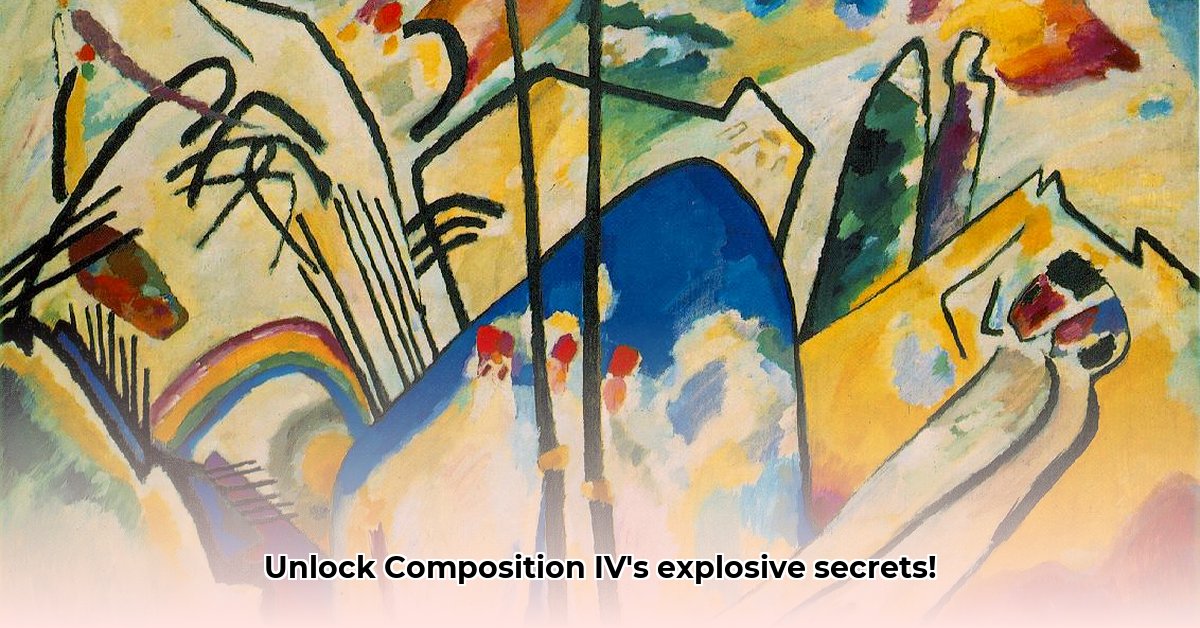What unites a military-grade explosive and an abstract painting? Surprisingly, both C-4 and Wassily Kandinsky’s “Composition IV” exemplify meticulous composition, demonstrating the power of deliberate arrangement to achieve a desired effect. This exploration delves into the scientific precision of C-4 and the artistic intricacies of Kandinsky’s work, revealing unexpected parallels in their construction and impact.
C-4: A Chemical Symphony of Controlled Detonation
C-4, or Composition C-4, derives its explosive power from a precisely balanced mixture of chemical compounds. RDX (Research Department Explosive), a highly energetic nitroamine, forms the core of C-4, comprising up to 91% of its composition. However, RDX’s sensitivity necessitates the inclusion of plasticizers, such as dioctyl sebacate (DOS) or dioctyl adipate (DOA), to ensure moldability and safe handling. Polyisobutylene (PIB), a synthetic rubber, acts as a binder, providing structural integrity and cohesion. A small percentage of mineral oil or process oil further contributes to the mixture’s plasticity. Even seemingly minor variations in these components can drastically alter C-4’s properties, impacting its sensitivity, detonation velocity, and overall effectiveness. This precise formulation allows for controlled detonation, crucial for military applications like demolitions and breaching operations. Furthermore, the distinct chemical signatures of military-grade C-4, commercial C-4, and similar explosives like PE-4 (Plastic Explosive No. 4) enable forensic analysis using sophisticated techniques like high-temperature gas chromatography/mass spectrometry (HTGC/MS) and time-of-flight secondary ion mass spectrometry (TOF-SIMS), providing crucial evidence in investigations.
Kandinsky’s “Composition IV”: A Visual Symphony of Color and Emotion
Transitioning from the scientific realm to the artistic, Kandinsky’s “Composition IV” presents a different kind of composition, a visual symphony orchestrated through color, form, and line. Kandinsky, a pioneer of abstract art, sought to express emotions and spiritual ideas, moving beyond representational depiction. He meticulously arranged vibrant hues, dynamic lines, and diverse shapes, each element playing a crucial role in the overall impact. The painting’s complex interplay of forms, including Cossacks, lances, and a rainbow, invites subjective interpretation and evokes a range of emotional responses. The positioning of colors, the thickness of lines, and the interaction between shapes all contribute to the painting’s expressive power. Even slight alterations in these elements could significantly shift the viewer’s experience, highlighting the delicate balance Kandinsky achieved. The painting’s creation involved a period of intense study and experimentation, culminating in a moment of serendipitous discovery when Kandinsky, upon seeing the canvas turned on its side, recognized the realization of his artistic vision.
Composition as a Unifying Principle: Bridging Art and Science
While seemingly disparate, C-4 and “Composition IV” share a fundamental principle: the deliberate arrangement of components to achieve a specific effect. C-4’s controlled detonation, designed for physical impact, and “Composition IV”‘s evocative power, intended for emotional resonance, both stem from this underlying principle of composition. Examining C-4 requires scientific analysis, exploring its chemical properties and energetic potential. Interpreting “Composition IV” necessitates aesthetic judgment, considering its artistic context and emotional impact. Both, however, demand careful study to unravel their complexities and appreciate the interplay of their constituent parts.
Interdisciplinary Insights: Expanding Perspectives and Applications
The juxtaposition of C-4 and “Composition IV” yields unexpected insights and potential applications. Understanding the precise formulation of C-4 can inform the development of safer and more effective explosives, benefiting military and industrial sectors. Analyzing Kandinsky’s artistic process can deepen our understanding of abstract art and inspire new creative endeavors. Museum curators can leverage this comparison to create engaging educational programs, illuminating the connections between seemingly disparate fields. Exploring the intersection of art and science can broaden perspectives and foster interdisciplinary thinking, leading to innovative solutions and a richer appreciation for the complexities of both the physical and artistic worlds.










